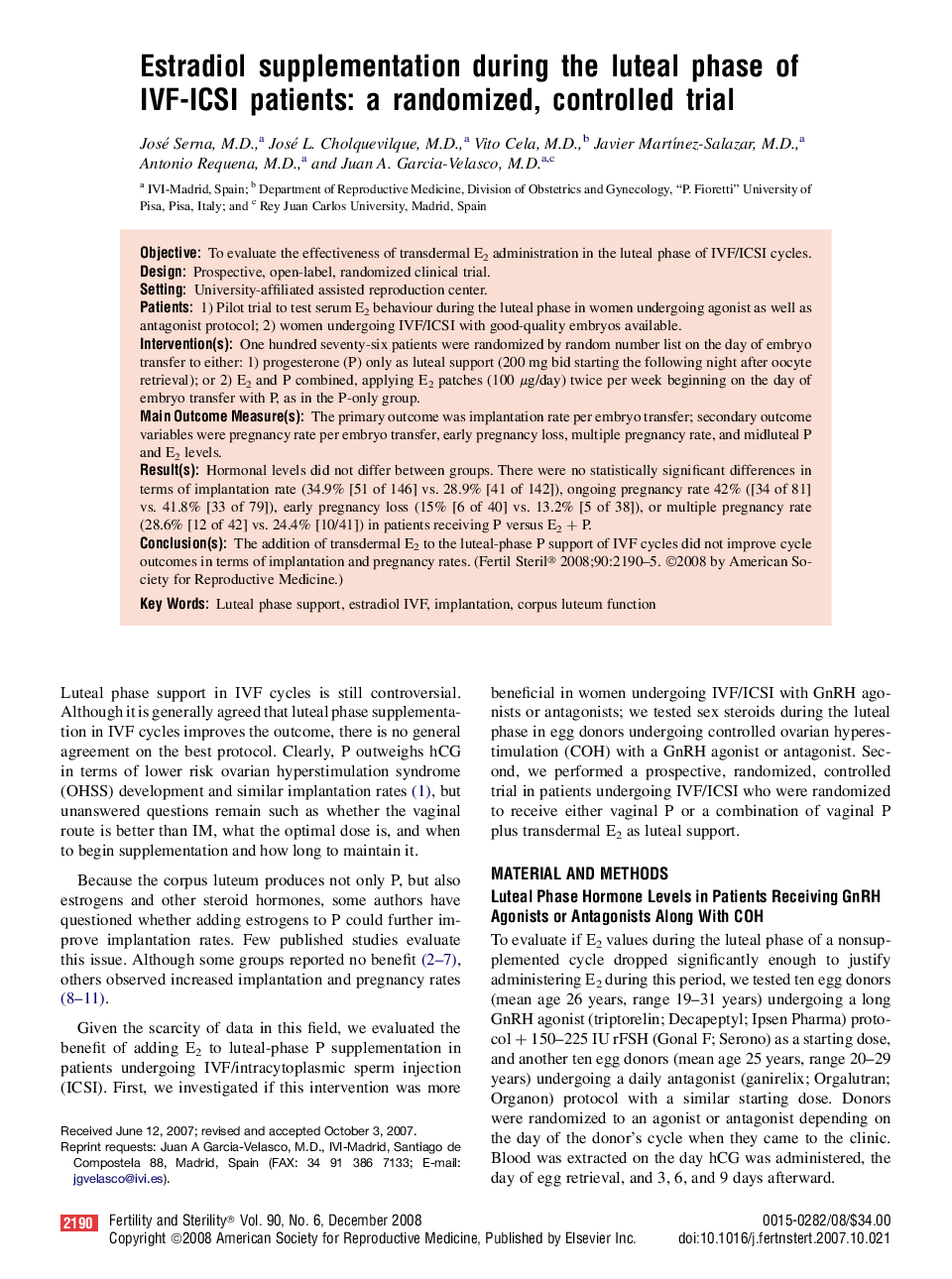| Article ID | Journal | Published Year | Pages | File Type |
|---|---|---|---|---|
| 3937182 | Fertility and Sterility | 2008 | 6 Pages |
ObjectiveTo evaluate the effectiveness of transdermal E2 administration in the luteal phase of IVF/ICSI cycles.DesignProspective, open-label, randomized clinical trial.SettingUniversity-affiliated assisted reproduction center.Patients1) Pilot trial to test serum E2 behaviour during the luteal phase in women undergoing agonist as well as antagonist protocol; 2) women undergoing IVF/ICSI with good-quality embryos available.Intervention(s)One hundred seventy-six patients were randomized by random number list on the day of embryo transfer to either: 1) progesterone (P) only as luteal support (200 mg bid starting the following night after oocyte retrieval); or 2) E2 and P combined, applying E2 patches (100 μg/day) twice per week beginning on the day of embryo transfer with P, as in the P-only group.Main Outcome Measure(s)The primary outcome was implantation rate per embryo transfer; secondary outcome variables were pregnancy rate per embryo transfer, early pregnancy loss, multiple pregnancy rate, and midluteal P and E2 levels.Result(s)Hormonal levels did not differ between groups. There were no statistically significant differences in terms of implantation rate (34.9% [51 of 146] vs. 28.9% [41 of 142]), ongoing pregnancy rate 42% ([34 of 81] vs. 41.8% [33 of 79]), early pregnancy loss (15% [6 of 40] vs. 13.2% [5 of 38]), or multiple pregnancy rate (28.6% [12 of 42] vs. 24.4% [10/41]) in patients receiving P versus E2 + P.Conclusion(s)The addition of transdermal E2 to the luteal-phase P support of IVF cycles did not improve cycle outcomes in terms of implantation and pregnancy rates.
